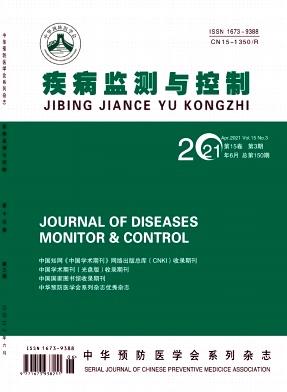Covid-19实验室指导诊断和管理的系统分析:挑战和建议
引用次数: 1
摘要
我们对患者人口统计学和实验室检测进行了全面分析,包括实时荧光定量PCR (RT-qPCR)和SARS-CoV-2的血清学检测,以及COVID-19疾病的血液成分和临床血液标志物。纳入截至2020年7月15日的所有相关文献,并对多项研究进行串联分析,以确定相关发现。对于RT-qPCR,基于各样本的检出率,鼻咽拭子是最合适的样本,但可能需要重复检测。症状出现后一周,血清学检测是更稳定的标志物。抗体滴度与疾病严重程度有关。据报道,一些临床血液成分和标记物对预后有帮助;然而,在进行解释时需要谨慎,因为在COVID-19中发现这些水平升高与易导致预后恶化的合并症之间存在关联。当前研究在寻找本文中提供的信息时面临的挑战表明,需要一个质量有保证的数据库,该数据库概述了完整的结果集,每个条目的匿名患者数据以及一套国际商定的完整实验室测试、文档和开放获取报告的指南。我们认为这些信息将有助于世界范围内的患者诊断和管理。8-14,另外对上呼吸道SARS-CoV-2进行RT-qPCR阳性检测,抗体水平特异性测定为99.1%,抗体特异性测定为98.6%,总抗体血清转化率为93.1% (161/173),IgM血清转化率为82.7% (143/173),IgG血清转化率为64.7%。血清总抗体仍呈阴性,无法获得血清用于检测后期(<13天PSO)的血清转化日(总抗体)、日(IgM)和(IgG)。本文章由计算机程序翻译,如有差异,请以英文原文为准。
A Systematic Analysis of Laboratory-Guided Diagnosis and Management of Covid-19: Challenges and Recommendations
We conducted a comprehensive analysis of patient demographics and laboratory tests encompassing Real Time PCR (RT-qPCR) and serology for SARS-CoV-2 in addition to blood components and clinical blood markers for COVID-19 disease. All relevant literature was included up to 15 July 2020 and multiple studies were analysed in tandem to correlate findings. For RT-qPCR, nasopharyngeal swabs are the most suitable samples based on detection rates by sample, but may require repeat testing. One-week post-symptom onset, serological testing is a more stable marker. Antibody titers have been linked to disease severity. Several clinical blood components and markers have been reported to be prognostically useful; however, care is needed when making interpretation owing to the association between raised levels of these being found for the co-morbidities that predispose to worse prognosis in COVID-19. Challenges in the current study when finding the information presented in this paper suggest the need for a quality assured database that outlines the complete set of results, anonymised patient data for each entry and a set of internationally-agreed guidelines for complete laboratory testing, documentation and open-access reporting. We suggest that such information would be useful to help with patient diagnosis and management, worldwide. 8-14, addition a positive RT-qPCR test for SARS-CoV-2 from an upper respiratory tract Antibody levels using specificity assays 99.1% antibodies), 98.6% and The seroconversion rate for total antibody 93.1% (161/173), 82.7% (143/173) for IgM, and 64.7% for IgG. remained seronegative for total antibody, to unavailability of serum for testing the later stage (<13 days PSO) of their time for seroconversion day (total antibodies), day (IgM) and (IgG)
求助全文
通过发布文献求助,成功后即可免费获取论文全文。
去求助
来源期刊
自引率
0.00%
发文量
5934
期刊介绍:
"Journal of Diseases Monitor and Control" was founded in 2007 and is a series of journals of the Chinese Association of Preventive Medicine. It was initially sponsored by the People's Hospital Affiliated to Inner Mongolia Medical University. In 2018, it was officially changed to Inner Mongolia Medical University with the approval of the Central Propaganda Department. It highlights the characteristics of "monitoring" and "control", focusing on the fields of preventive medicine, public health, epidemiology, etc., while taking clinical medicine into consideration. It publishes advanced theories, technical methods, measures and experiences in all the above aspects.

 求助内容:
求助内容: 应助结果提醒方式:
应助结果提醒方式:


